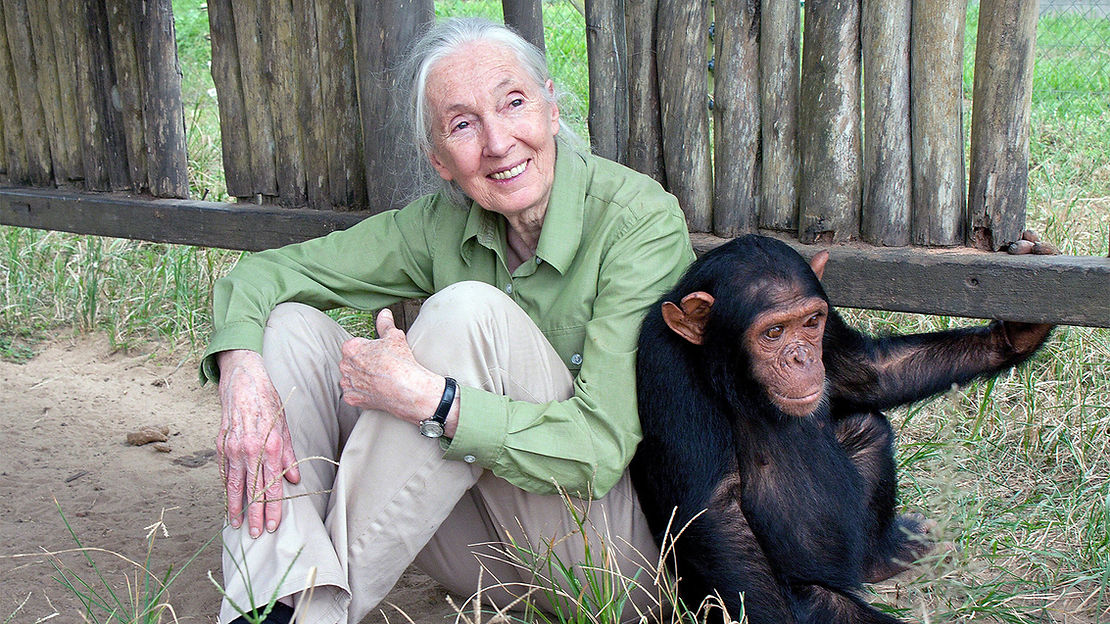By: Rachael Tan
Born on April 3rd, 1934, Jane Goodall was an English primatologist and anthropologist, and the world’s foremost expert on chimpanzees. After 60 years studying the social and family interactions of wild chimpanzees, she proved many scientists wrong with her research.
As a child, Goodall’s father gave her a stuffed toy chimpanzee named Jubilee as an alternative to a teddy bear. Goodall has said her fondness for it sparked her early love of animals, commenting,
“My mother’s friends were horrified by this toy, thinking it would frighten me and give me nightmares.” Jubilee still sits on Goodall’s dresser in London.
Goodall had always been drawn to animals and Africa. This interest brought her to the farm of a friend in the Kenya highlands in 1957.
From there, she obtained work as a secretary, acting on her friend’s advice. She telephoned Louis Leakey, the Kenyan archaeologist, paleontologists, and a good friend of Goodall.
Leakey believed that the study of existing great apes could provide indications of the behavior of early hominids. He was also looking for a chimpanzee researcher, though he kept the idea to himself.
Instead, he proposed that Goodall work for him as a secretary. After obtaining approval from his co-researcher and wife, British paleoanthropologist Mary Leakey, Louis sent Goodall to Olduvai Gorge in Tanganyika, today known as Tanzania, where he laid out his research plans.
Goodall followed Leakey’s research plan at Gombe Stream which challenged two long-standing beliefs: that only humans could construct and use tools, and that chimpanzees were vegetarians.
While observing one chimpanzee feeding at a termite mound, she watched him repeatedly place stalks of grass into termite holes, then remove them from the hole covered with clinging termites, effectively “fishing” for termites.
The chimpanzees would also take twigs from trees and strip off the leaves to make the twig more effective. This is a form of an object modification that is the basic beginning of toolmaking.
In contrast to the peaceful and affectionate behaviors she observed, Goodall also found an aggressive side of chimpanzee nature at Gombe Stream.
She discovered that chimpanzees will systematically hunt and eat smaller primates such as colobus monkeys.
Goodall watched a hunting group isolate a colobus monkey high in a tree and block all possible exits; then one chimpanzee climbed up and captured and killed the colobus.
The chimpanzees at Gombe kill and eat as much as one-third of the colobus population in the park each year.This alone was a major scientific find that challenged previous beliefs of chimpanzee diet and behavior.
Without Goodall’s amazing work, scientists today would still be puzzled around the same false facts that were proved wrong by Goodall. As well as her research, Goodall’s personal life was also pretty complicated.
Goodall has married twice. On 28 March 1964, she married a Dutch nobleman, wildlife photographer Baron Hugo van Lawick, at Chelsea Old Church, London. The couple had a son, Hugo Eric Louis, who was born in 1967. However, they divorced in 1974.
The following year, she married Derek Bryceson, a member of Tanzania’s parliament and the director of that country’s national parks. He died of cancer in October 1980.
Goodall says that if we all do our part to help, the world will be a better place. “Everybody has to do their bit in the environment where they are,” she says. “You can’t just help the environment as a whole. We’re all interconnected.”











